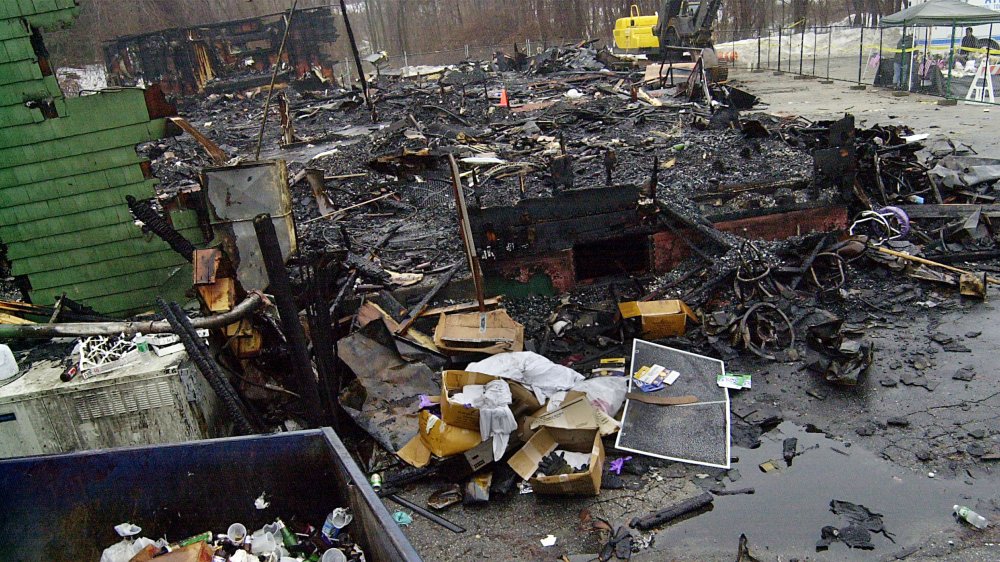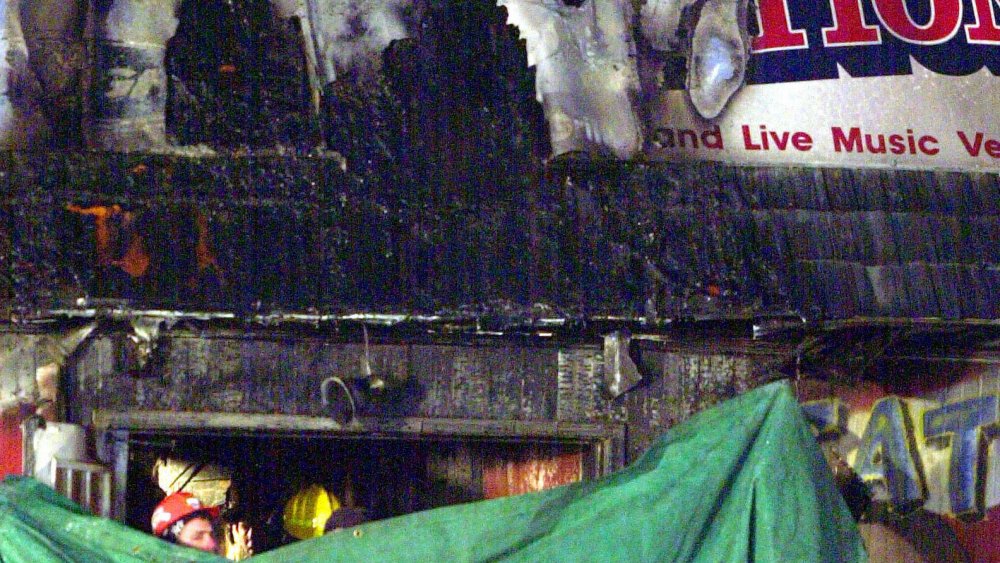The Great White Nightclub Fire Explained
On February 20th, 2003, the city of West Warwick, Rhode Island was shaken by tragedy when a fire broke out at the Station nightclub. All in all, it took less than five minutes from the point of ignition for the club to be entirely consumed by flames, and panicked concert goers struggled to escape the conflagration, causing a bottleneck at the front entrance. In all, over two hundred injuries were reported, and a hundred people lost their lives. Among the casualties was Great White guitarist Ty Longley, who reportedly ran back into the burning building in an attempt to rescue his guitar.
A loss of life on this scale, suffered so immediately, is hard to wrap your head around. That said, it's also the sort of thing that needs to be examined in the hope of preventing similar calamities in the future. According to witness testimony corroborated by video from the night of the fire, Great White had just started playing their opening number, "Desert Moon," when a series of four pyrotechnics called "gerbs" were set off behind them. The gerbs, essentially souped up spark throwers, were set up in a line, with the two in the center pointed straight up and the ones on each end angled diagonally, launching sparks directly into the club's acoustic foam wall panels.
The foam used in the club's walls wasn't just remarkably flammable. When burned, it also produced a spectacularly toxic smoke composed of hydrogen cyanide and carbon monoxide, a lethal combination capable of rendering a person unconscious on inhalation. While it was quasi-reasonably assumed by some people in the crowd that the flames were part of the act, the reality of the matter set in fast when the band stopped playing and, in under a minute, the stage was consumed by fire.
Fire at the station
The entire event was a perfect storm of bad planning. The Station was overcrowded, with 462 people crammed into a room only licensed to hold about 400. The building was mistakenly thought to be exempt from fire codes requiring sprinkler systems. With no fire suppression system in place and the extreme high temperatures generated by the burning foam, in practically no time, the situation reached what's called "flashover," the point in a fire when all flammable materials in an enclosed space hit flashpoint and start releasing flammable gases. Combined with the panic of the crowd and the deadly poison in the air, it was practically a miracle that anyone got out at all.
In the end, Great White's manager, who set up the pyrotechnics, plead guilty to 100 counts of involuntary manslaughter against the advice of his attorney. He was released from prison in March of 2008 after being deemed highly unlikely to reoffend. The club's owners were fined just over $1 million for their negligence and sentenced to fifteen years; four served and eleven suspended.

